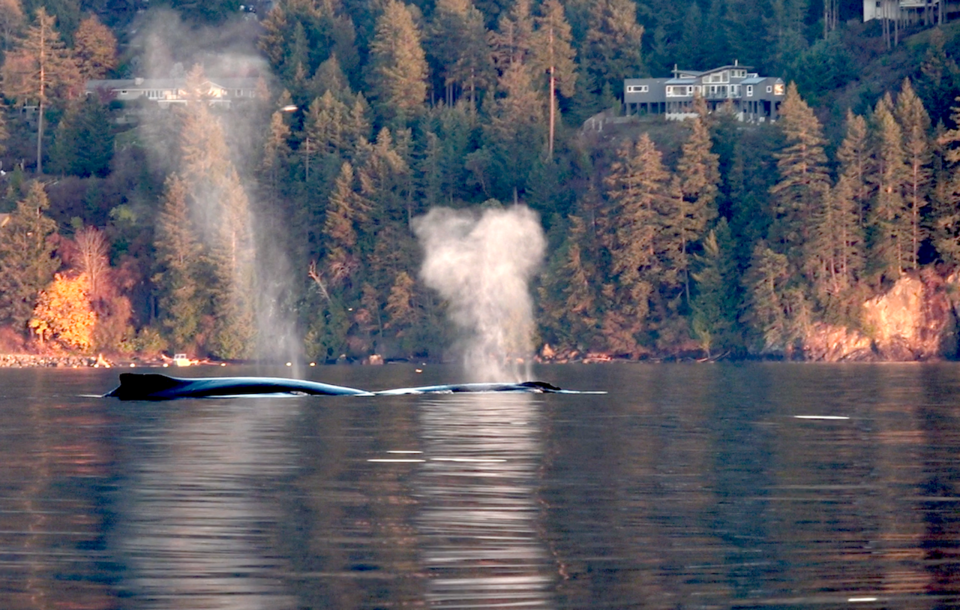If things go as they have during the last two years, humpback whales will visit the west side of Bowen Island for several weeks this October.
We live in humpback habitat. Humpback whales were common in Howe Sound and the Salish Sea in the 1800s, but the advent of whaling steamships with explosive harpoons exterminated them by 1908. Whaling continued throughout the northeast Pacific until the 1960s, when the international community agreed to a moratorium. Since then, humpback and other whales have been slowly reclaiming their old territory along the B.C. Coast. In 2008, after a hundred year absence, a humpback whale was reported in Atl’ka7tsum –Howe Sound. Ever since, their visits have continued to grow.
As much as humpback whales are still a novelty for us in Howe Sound, whale watching as a commercial enterprise may well have started right here.
John Ford, a marine mammal scientist with DFO wrote “what was perhaps the first whale-watching enterprise anywhere began in B.C. in the early 1900s, when humpback whales in Howe Sound became an attraction for tourists in Vancouver.”
In the early 1900s, Captain J.A. Cates of the Terminal Steamship Company was running whale watching tours into Howe Sound to see humpback whales. Then, in 1907, the Sechart Whaling Company began hunting whales in the Strait of Georgia. Captain Cates protested to his parliamentary representative that the whalers had killed more than 20 whales in Howe Sound in four months. His concerns went unheeded and, in 1908, the whalers hunted down the last whales, then moved their operations to the west coast of Vancouver Island.
Today, humpbacks are the whales you are most likely to see in Howe Sound (killer whales or orcas as they are also known are in fact not whales, but the world’s largest dolphins). Humpback whales, which range in size to 12m long and 40 tonnes, have the longest flippers of any whale, and their scientific name, Megaptera means “Large wing.” These large flippers allow them to be very maneuverable and acrobatic. A breaching humpback whale is something to behold.
Humpback whales feed by straining small organisms through fine plates or baleen in their mouths. Humpback whales are “gulpers” and lunge with their mouths open at dense patches of prey such as anchovy or herring. Last October I was filming a school of anchovy from my kayak off Cape Roger Curtis when a humpback broke the surface less than 10 m away, mouth open, as it fed on the anchovy. I told this story in my YouTube movie called “Return of the Humpbacks.”
After a winter in the warm waters off Mexico or Hawaii where calves are born, humpback whales migrate to the B.C. Coast to feed in our rich coastal waters. They commonly visit Howe Sound from March to October before migrating south. Why humpbacks appear to favour the west side of Bowen Island in October I can only guess, but I know at times they were feeding on anchovy. So if we have schools of anchovy this October off Bowen, we may well also have humpback whales to watch.
Note: This article is derived from the Bowen Island/Nexwlélexm Marine Conservation Atlas currently in preparation by a team of islanders working with the Bowen Island Conservancy.



